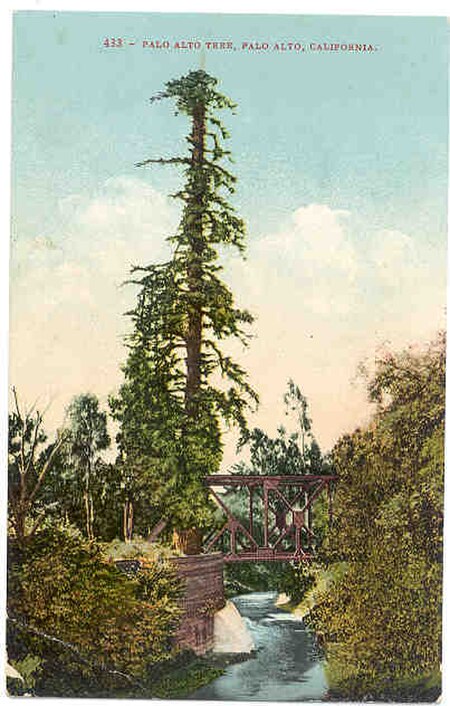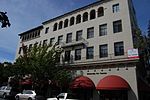El Palo Alto

El Palo Alto (Spanish for 'the tall pole' or 'post', or "tall stick") is a coastal redwood tree (Sequoia sempervirens) located in El Palo Alto Park on the banks of San Francisquito Creek in Palo Alto, California, United States. It is famous for its historical significance and as the namesake of the city of Palo Alto. In July 2016, El Palo Alto was 110 feet (33.5 meters) in height, down from 162.2 feet (49.4 meters) in 1814. Its top progressively died from 1865 to 1955 from lowering of the water table so that its roots could no longer reach sustenance. The landmark redwood is 90 inches (2.3 meters) in diameter, and has a crown spread of 40 feet (12 meters). In 1955, an increment boring of the tree was taken and the tree's age was accurately determined to be 1,015 years. El Palo Alto originally had 3 trunks. It is unknown what happened to the first trunk; it remains as a stump attached to the current trunk. The second trunk fell in 1886, also for unknown reasons.
Excerpt from the Wikipedia article El Palo Alto (License: CC BY-SA 3.0, Authors, Images).El Palo Alto
Palo Alto Avenue, Palo Alto
Geographical coordinates (GPS) Address External links Nearby Places Show on map
Geographical coordinates (GPS)
| Latitude | Longitude |
|---|---|
| N 37.44727 ° | E -122.17014 ° |
Address
El Palo Alto
Palo Alto Avenue
94301 Palo Alto
California, United States
Open on Google Maps






